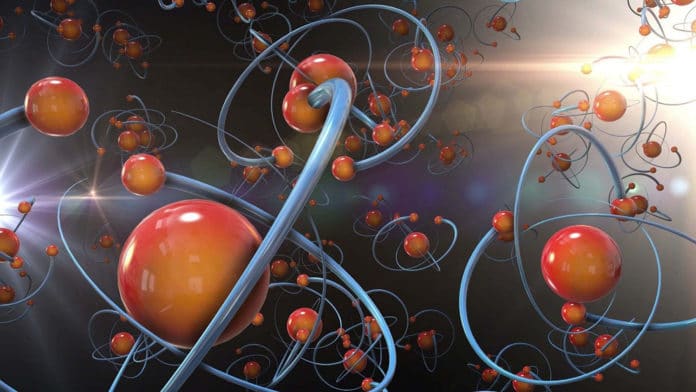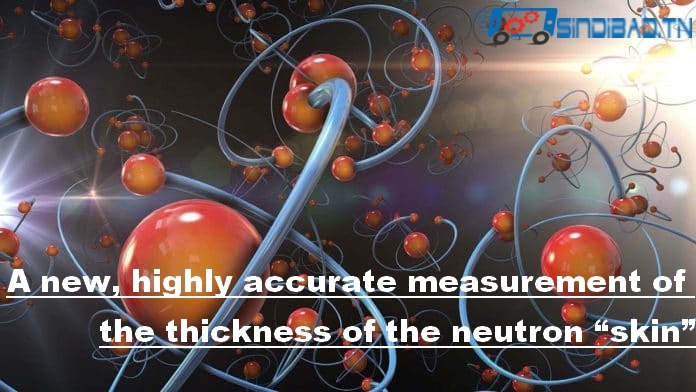Another, profoundly exact estimation of the thickness of the neutron “skin” found
Considering cores could assist researchers with deciding how protons and neutrons act inside the core. The Lead Radius Experiment cooperation, called PREx (after the synthetic image for lead, Pb), is considering the fine subtleties of how protons and neutrons are dispersed in lead cores.
The inquiry is about where the neutrons are leading the pack. Lead is a weighty core – there are additional neutrons; nonetheless, taking everything into account, a comparable mix of protons and neutrons works better.
As of late, researchers at the U.S. Branch of Energy’s Thomas Jefferson National Accelerator Facility have made another, exceptionally precise estimation of the thickness of the neutron “skin” that incorporates the lead core. The results of their test uncovered that the neutron skin has a thickness of .28 millionths of a nanometer.
Kent Paschke, an educator at the University of Virginia and investigation co-representative, clarified, “light cores, those with only a couple protons, commonly have equivalent quantities of protons and neutrons inside. As cores get heavier, they need a greater number of neutrons than protons to stay stable. All steady cores that have in excess of 20 protons have a larger number of neutrons than protons. For example, lead has 82 protons and 126 neutrons. Estimating how these additional neutrons are dispersed inside the core is a critical contribution for seeing how hefty cores are assembled.”

“The protons in a lead core are in a circle, and we have tracked down that the neutrons are in a bigger circle around them, and we call that the neutron skin.”
The investigation is the principal exploratory perception of this neutron skin utilizing electron dissipating methods. It could help physicists make a more exact estimation of its thickness in PREx-II.
It is very difficult to gauge neutrons because of touchy tests that physicists use to quantify subatomic particles depend on estimating the particles’ electric charge through the electromagnetic connection, one of the four collaborations in nature.
Paschke said, “Protons have an electric charge and can be planned utilizing the electromagnetic power. Neutrons have no electric charge, yet contrasted with protons, they have an enormous powerless charge, thus in the event that you utilize the feeble connection, you can sort out where the neutrons are.”
During the trial, physicists correctly sent a controlled light emission into a flimsy sheet of cryogenically cooled lead. These electrons were turning toward them of movement, similar to a twisting on a football pass.
Electrons in the bar related with the lead target’s protons or neutrons either through the electromagnetic or the powerless association. While the electromagnetic cooperation is reflect symmetric, the frail collaboration isn’t. That implies that the electrons that interfaced utilizing electromagnetism did as such, paying little regard to the electrons’ twist course. Conversely, the electrons related with the delicate association particularly did so more routinely when the twist was a single way versus the other.
Krishna Kumar, an analysis co-representative and teacher at the University of Massachusetts Amherst, said, “Utilizing this deviation in the dispersing, we can distinguish the strength of the cooperation, and that reveals to us the size of the volume involved by neutrons. It reveals to us where the neutrons are contrasted with the protons.”
“The estimation required a serious level of exactness to complete effectively. The electron pillar turn was flipped from one heading to its inverse 240 times each second all through the exploratory run. At that point the electrons voyaged almost a mile through the CEBAF gas pedal prior to being definitely positioned on the objective.”
“On normal over the whole run, we knew where the right-and left-hand radiates were, comparative with one another, inside a width of 10 particles.”
Physicists later gathered and dissected electrons that had dispersed off lead cores while leaving them unblemished. Thye at that point joined it with the past 2012 outcome, and accuracy estimations of the lead core’s proton range, regularly alluded to as its charge span.
Paschke said, “The charge span is about 5.5 femtometers. Furthermore, the neutron appropriation is somewhat bigger than that – around 5.8 femtometers, so the neutron skin is .28 femtometers or around .28 millionths of a nanometer.”
Researchers noticed, “this figure is thicker than certain hypotheses had recommended, which has suggestions for the actual cycles in neutron stars and their size.”
Paschke said, “This is the most immediate perception of the neutron skin. We discover what we call a firm condition of state – higher than anticipated pressing factor so that it’s hard to crush these neutrons into the core. As, we’re tracking down that the thickness inside the core is a tad lower than was normal.”
Kumar said, “We need to know the substance of the neutron star and the condition of state, and afterward we can foresee the properties of these neutron stars. Thus, what we are adding to the field with this estimation of the lead core permits you to all the more likely extrapolate to the properties of neutron stars.”
“As neutron stars begin to winding around one another, they discharge gravitational waves that LIGO recognizes. Also, as they draw near in the last part of a second, the gravitational draw of one neutron star makes the other neutron star into a tear – it becomes oval like an American football. On the off chance that the neutron skin is bigger, it implies a specific shape for the football, and if the neutron skin were more modest, it implies an alternate shape for the football. Furthermore, the state of the football is estimated by LIGO. The LIGO explore and the PREx try did totally different things, yet they are associated by this essential condition – the condition of condition of atomic matter.”




0 Comments